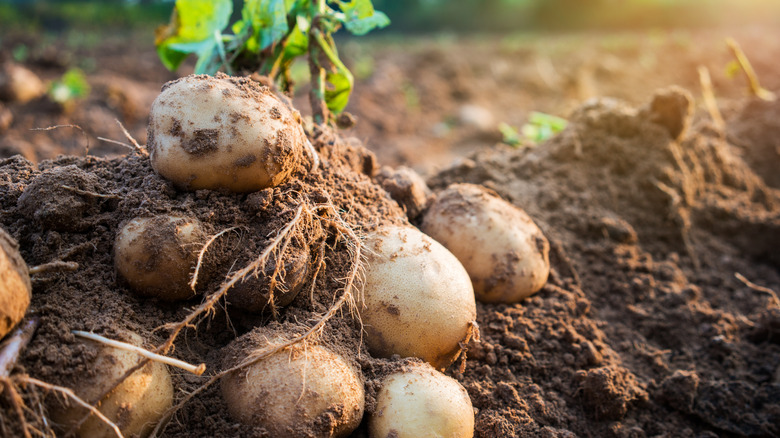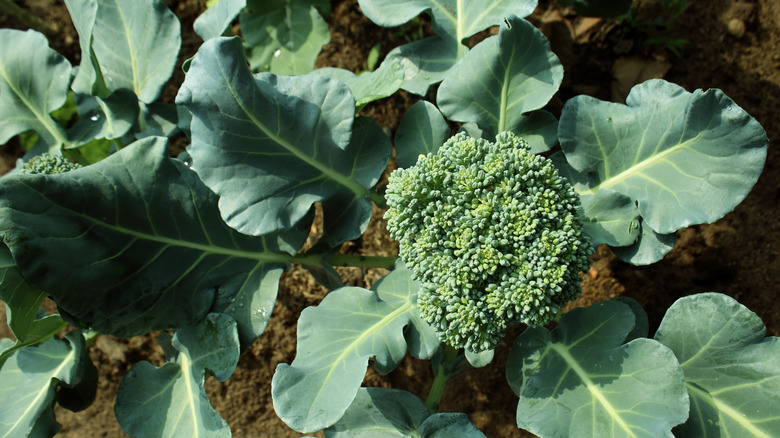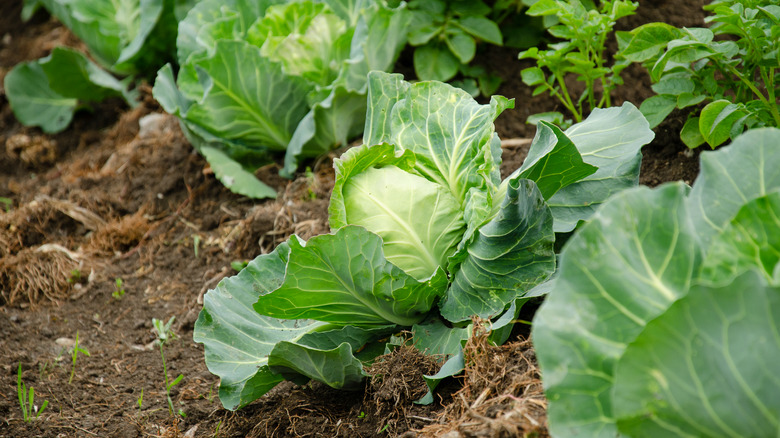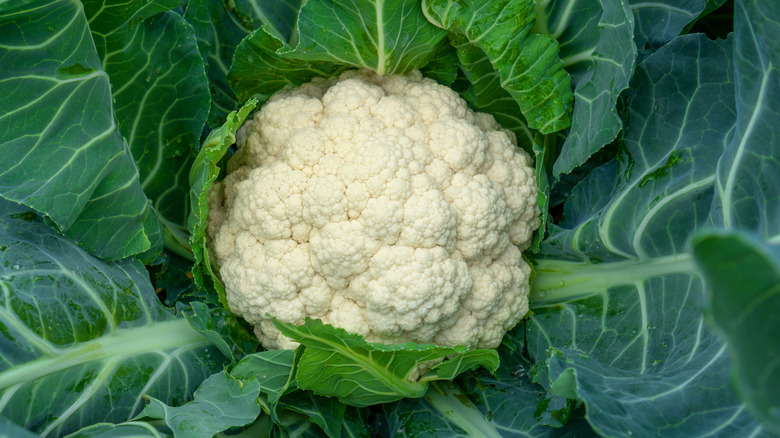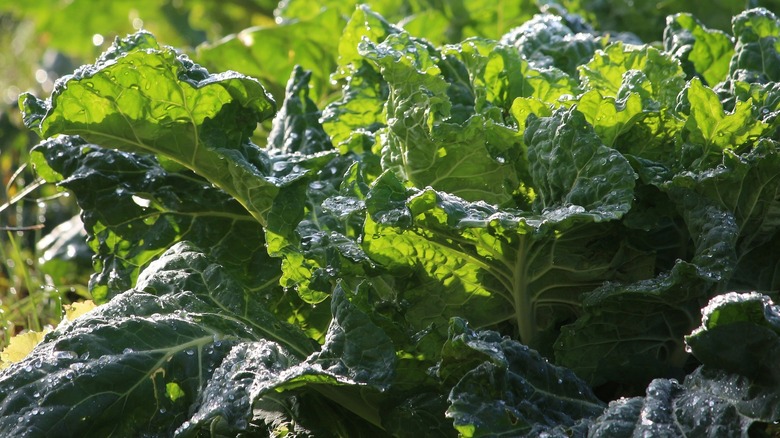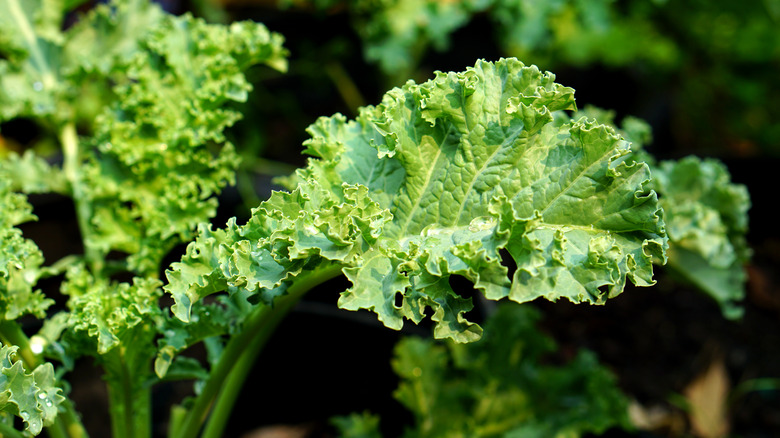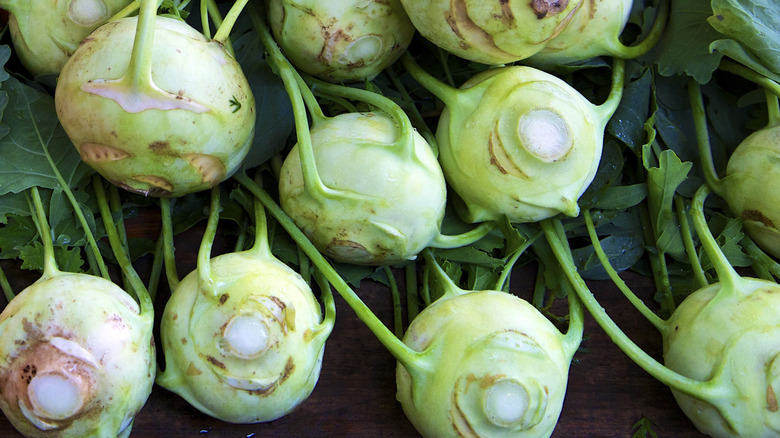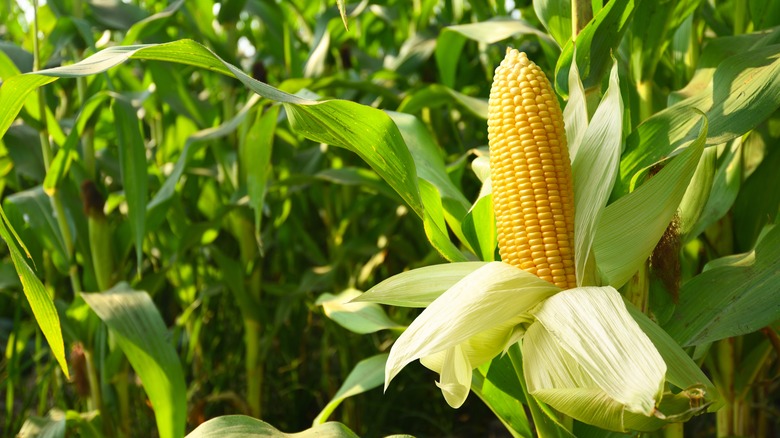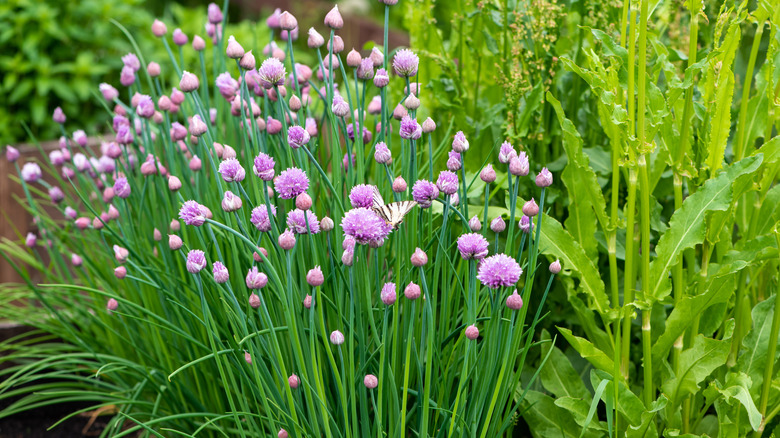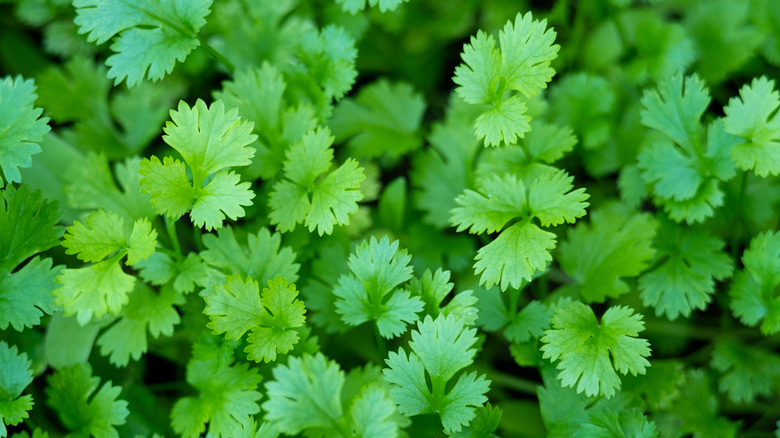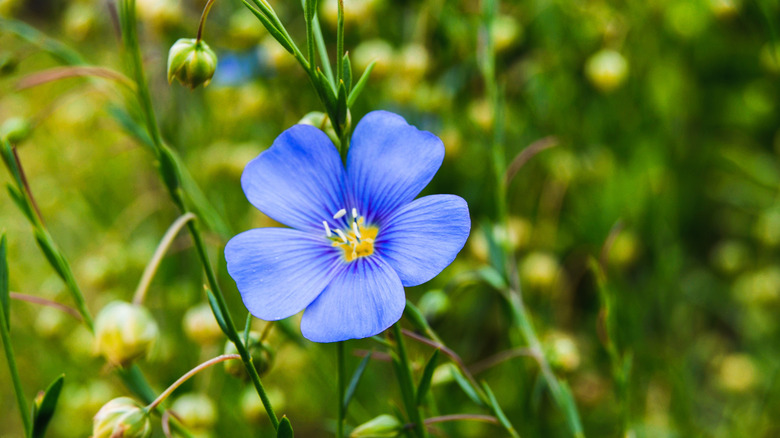Companion Plants That Belong Beside Your Potatoes In The Garden
Growing potatoes is relatively easy, especially if you give them the right growing conditions. That includes making sure they're planted in a spot that gets the proper amount of sun, the ideal amount of water, the optimal kind of soil, and has just the right neighbors. When it comes to the latter, there are various companion plants that not only thrive when grown alongside potatoes but can actually give the starchy veggies an added boost while also protecting them.
If you're not familiar with the idea of companion planting, it simply means popping certain vegetables, fruits, herbs, or flowers into the ground in specific spots so that they're next to or near other plants that will help them in various ways. This might include providing additional nutrients, enriching the soil, and keeping nasty critters at bay. At the same time, they won't hinder the growth of what's around them. Indeed, some varieties don't do well together or in areas where something else was previously grown. That's why you never want to plant potatoes in the ground where eggplants, peppers, or tomatoes were recently grown due to the fact that these veggies can have diseases that can harm your new crop.
This is why it's important to avoid plants that aren't ideal for your potatoes. Instead, it's best to stick with the wide range of companion options that will help your potatoes survive and thrive. That's not to mention eventually becoming a part of a delicious homegrown meal.
Broccoli
Just like potatoes, broccoli (Brassica oleracea) is a relatively common vegetable you might want to grow in your garden. It happens to be a plant that likes lots of sunshine and a reasonable amount of water but doesn't like sitting in soil that gets too soggy. It also grows well alongside herbs like dill and rosemary as well as veggies like celery and cucumbers. As for potatoes, spuds tend to appreciate the fact that broccoli develops shallow root systems which don't attempt to horde nutrients or crowd other plants that like to settle lower down in the soil.
Cabbage
When you add cabbage (Brassica oleracea L. var. costata) to your garden, you'll want to ensure each plant has enough space to grow even when beside its potato friends. For instance, pop one into the ground every 18 to 24 inches away from the next, although this can be adjusted slightly depending on the variety of cabbage. You also don't want to place it too close to other kinds of plants, including potatoes. This said, cabbage plants make ideal neighbors, that is, companions, in your garden for the same reason that broccoli suits — they don't steal nutrients or take up too much room.
Cauliflower
A vegetable that's in the same family as broccoli and cabbage, cauliflower (Brassica oleracea var. botrytis) may boast its own appearance and flavor, however, it also has many of the same aspects as the other options. That's why it's another fantastic companion choice to plant near potatoes. Ensure each plant has a nice sunny spot in your garden — giving it anywhere from six to eight hours of sunshine each day — if you want big, thick heads of cauliflower. On the other hand, give them a little shade on particularly hot days.
Collard greens
Although collard greens (Brassica oleracea var. acephala) are a fabulous choice if you're looking for non-competitive companion plants to grow around your potatoes, you may not want to pop their seeds directly into the ground. Instead, it may be better to start growing your plants indoors for the first four to six weeks. Then, after the last frost occurs, you can move them outside. This will give them more time to become stronger before you plant them in your garden. You can also sow during mid-summer if you want to harvest late-season collard greens along with potatoes.
Kale
If you like to use kale (Brassica oleracea L. var. acephala) in your salads, soups, and other delicious and nutritious dishes, then you'll surely want it in your garden where you should place it beside your potatoes. Thanks to the fact that the spuds grow deeper down while kale seeds should only be planted around half of an inch in the soil, both can grow without encroaching on each other. This also works in kale's favor as it doesn't do well when it's grown close to bigger plants that can overshadow it.
Kohlrabi
Kohlrabi (Brassica olearcea var. gongylodes) may not be as well known as other options on this list, however, it's another member of the cabbage family that develops shallow potato-friendly roots. A vegetable that you'll want to grow during the spring or fall months when the weather isn't too hot or cold, you can eat both the leaves and the bulbs of this tasty treat. You can also enjoy kohlrabi raw or cook them in the same way you do potatoes, including baking, boiling, frying, steaming, roasting, and even mashing them.
Corn
If you've ever seen corn (Zea mays) on a stalk, then you'll know the plant grows to be quite tall. Although you might assume that this means it has deep roots to keep it strong and steady, you actually only need to plant the seeds 1 to 2 inches down and the roots won't end up reaching very deep into the ground. This, of course, means corn is an ideal neighbor for potatoes who like enough room to do their thing deeper down. As an added companion bonus, growing corn next to potatoes supposedly makes the latter taste better.
Chives
Add a touch of flavor to your favorite potato-based dishes with the help of a handful of chives (Allium schoenoprasum), an herb that also grows well alongside potatoes. As chives develop, they keep their roots on the shallow side, which means that they won't crowd the starchy veggies. Granted, that's just one perk. The plant that produces green stems and puffy purple flowers that can both be eaten — in fact, you can eat the entire plant — also attracts helpful insects to the area while growing in your garden.
Cilantro (coriander)
Whether you call it cilantro (Coriandrum sativum) or prefer to refer to this plant as coriander, it's an herb that some people love and others tend to hate. If you're among the former group, then you should definitely consider growing it in your garden alongside your potatoes. Frankly, they may be the best pals for each other, in part, due to the fact that cilantro brings bugs around that dine on annoying critters that can destroy your crop of spuds like the particularly nasty and problematic Colorado potato beetles.
Flax
Cilantro isn't the only plant that can keep Colorado potato beetles away from your garden and, in turn, away from your potatoes. Flax (Linum usitatissimum) can also do the job while filling your garden with beautiful blue blooms. The linseed oils as well as the tannins found in flax repel the pests that can also make a meal of your eggplants, ground cherries, nightshade, peppers, and tomatoes. Found all over North America and invading gardens in the spring as potato plants start to grow, these pesky critters aren't deterred by pesticides, so companion planting might be an ideal option.
